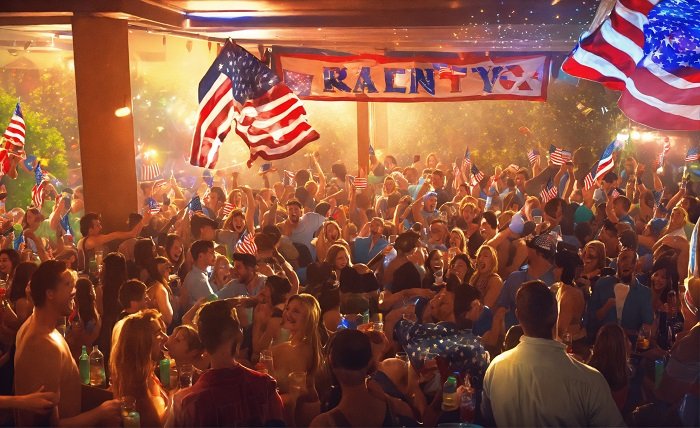Across Europe, alcohol is more than a drink. It is part of history, economy, and social life. Each region carries traditions shaped by climate, crop, and custom. Over time, these traditions evolved into festivals that mix ritual with humor, sometimes producing results that surprise visitors. Whether it is a wine harvest or a village celebration, these events reveal much about how Europeans connect through shared experience. In a similar way that sports fans might track online betting cricket results to follow their passions, locals and travelers gather at these festivals to take part in something communal, rhythmic, and rooted in place.
The Cultural Role of Alcohol Festivals
Europe’s alcohol festivals are not just about consumption. They represent memory, work, and identity. Many originated as agricultural celebrations tied to the harvest season. Grapes, barley, apples, and honey — all used for drink — became symbols of survival and prosperity.
Over centuries, these occasions developed into structured events with parades, songs, and competitions. They marked both the end of labor and the start of social connection. Even in modern times, the purpose remains similar: to bring people together through a shared product of their land.
The European approach to alcohol differs from the purely commercial. While global brands dominate markets, regional festivals still focus on locality. A drink’s meaning depends not only on taste but on the story behind it — who made it, when, and how.
Southern Europe: Celebration and Ceremony
In southern Europe, the warm climate and long history of winemaking shape many festivals. Rural communities often celebrate harvest time with open-air gatherings, music, and food. These events are less about indulgence and more about marking cycles of nature.
One example is the grape-stomping ritual, still practiced in some villages. Participants press grapes by foot, singing as they work. This old method, now symbolic rather than practical, honors the craft of winemaking.
In coastal areas, alcohol festivals often combine land and sea traditions. Fishermen and farmers celebrate side by side, turning the event into a collective thanksgiving. The emphasis on rhythm — work, rest, and reward — reflects how communities sustain themselves over time.
Central Europe: Tradition Meets Participation
Moving north, festivals in central Europe often mix folklore with public participation. Beer and cider dominate this region, shaped by centuries of brewing and fermentation. Town squares fill with music, folk dress, and processions that date back to medieval guilds.
These festivals blend ritual and play. Competitions like barrel rolling, mug carrying, or song contests create a sense of shared challenge. Local brewers display their craft, often drawing from family recipes passed down through generations.
While visitors might see only the surface — a crowd drinking together — the meaning runs deeper. Each activity reinforces the link between production and pride. The ability to make something from one’s own soil remains central to cultural identity.
Northern Europe: Endurance and Humor
In northern Europe, alcohol festivals often carry an element of endurance. Cold climates and long winters have encouraged strong drinks and lively gatherings. The tone can be humorous, even self-mocking, as if communities laugh at their own toughness.
Winter festivals sometimes feature ice bars, bonfires, and open-air tastings. Participants drink to warmth, light, and companionship. Songs and stories are as important as the beverages themselves. The act of gathering outdoors in cold weather becomes a symbolic victory over isolation.
Some small towns host events that blend drinking with games or mild absurdity — races, dances, or theatrical performances that mock authority and tradition. The mix of seriousness and play captures the balance between restraint and release found in much of northern European culture.
The Economic and Social Dimensions
While rooted in history, alcohol festivals now play a role in tourism and local economies. They draw visitors, create seasonal jobs, and promote regional products. For smaller towns, the events provide both income and recognition.
At the same time, they raise questions about moderation and image. Many organizers emphasize heritage and craftsmanship rather than excess. The focus is shifting toward storytelling — how drinks are made, why they matter, and how they connect generations. This move reflects a broader trend: people seek authenticity rather than spectacle.
Yet, the commercial aspect cannot be ignored. Some festivals have grown large, with sponsors and media coverage. Balancing economic gain with cultural integrity remains an ongoing challenge.
The Psychology of Celebration
What makes these festivals persist? Part of the answer lies in psychology. Drinking, when tied to ritual, becomes more than recreation. It marks transition — from season to season, work to rest, or individual to community.
Festivals also provide controlled space for release. They allow emotion to surface, whether joy, nostalgia, or relief. Music, laughter, and shared rhythm create belonging. In this sense, alcohol acts less as the focus and more as the vehicle for connection.
These dynamics explain why such festivals survive even as other traditions fade. They fulfill a social function — reaffirming ties, acknowledging labor, and celebrating resilience.
A Modern Continuation of Ancient Patterns
Despite technology and globalization, Europe’s alcohol festivals remain grounded in place. They adapt, but they do not disappear. Urban populations now rediscover rural events as escapes from routine. Younger generations attend not only to drink but to understand heritage.
This continuity shows that while forms change, the need for communal celebration stays constant. From the Mediterranean coast to northern fjords, alcohol festivals still serve as mirrors of culture — revealing how people relate to work, nature, and each other.
Conclusion
Quirky alcohol festivals around Europe may appear light-hearted, but they carry deep cultural meaning. They merge labor, art, and social ritual into one experience. Each song, parade, or shared toast connects the present to centuries of history.
These gatherings remind people that culture often survives through repetition — through acts that seem small but hold symbolic power. Whether in a vineyard, a village square, or a snowy field, the European tradition of celebration endures, turning drink into dialogue and memory into shared ritual.
